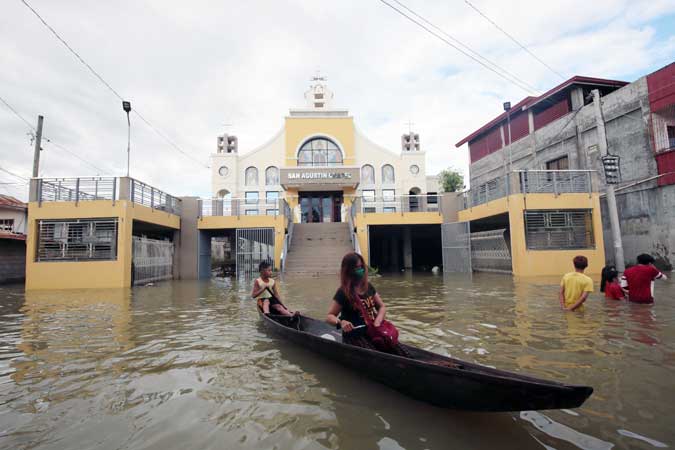THE PHILIPPINES is losing an average of 1.7% of its overall economic output each year due to typhoons, according to estimates by the Asian Development Bank (ADB), which noted the country’s need to strengthen its resilience against natural disasters.
In a “Disaster Resilience in Asia” report published on Thursday, the ADB said the impact of storms on the Philippine economy could hit up to 23% of gross domestic product (GDP) each year in extreme cases.
Typhoons alone may have cost the economy at least $20 billion from 1990 to 2020 in GDP losses, ADB said.
While many residents usually return to the typhoon-hit areas after being evacuated, the ADB said the impact of severe disasters tend to linger.
“This relatively rapid restoration of economic livelihoods and activity should not, however, be viewed as a sign of disaster resilience, especially for vulnerable places where disasters occur frequently. If nothing further is done except the restoration of activity, returning to these affected areas simply means placing the same populations and assets back in the path of disasters,” the multilateral bank said.
The ADB warned that Asian countries, including the Philippines, should prepare for worsening impact of natural disasters due to climate change.
“Some disaster effects are more pervasive, spreading across geographic areas via supply chain linkages and the migration of people (including employees)… Further, the effects from disasters permeate to another sector of the economy — households and individuals — and they do so in many interlinking ways,” it added.
The Philippines is among the most disaster-prone countries in the world, experiencing typhoons, flash floods, earthquakes and volcanic eruptions.
Meanwhile, the ADB said a third of all natural disasters and technological hazards that occurred since 1960s happened in developing Asia, with the region’s share of these disasters compared with the rest of the world ranged from 34% to 40% each decade. More than one-fourth of the $135 billion in average annual global damage recorded each year is in the region.
Given the huge impact of natural disasters, the ADB said developing economies in the region like the Philippines should strengthen their disaster resilience.
“The starting point for building disaster resilience is by reducing risk. Disaster risk reduction in turn entails diminishing vulnerability and exposure to natural hazards that are at the highest risk of becoming disasters, whether as local events or major catastrophes,” it said.
In an ADB webinar on Thursday, Ilan Noy, a professor of economics and the inaugural chair in the Economics of Disasters and Climate Change at Victoria University of Wellington in New Zealand, said governments should spend more on disaster resilience initiatives to minimize economic losses.
“Most of the amount we spend on disasters is in the emergency phase rather than in prevention resilience building and resilience reduction. [The latter is] where we should be spending our money on because we know that prevention is a much more worthy investment,” Mr. Noy said.
He said one example of good public investment on disaster mitigation is those programs that will improve governance and transparency in information, and help local governments avoid areas that are prone to disasters like floods and earthquakes.
Republic Act No. 10121 mandates local government units to allocate 5% of the revenues they generate to the Local Disaster Risk Reduction and Management Fund to finance programs and activities related to disaster prevention and response. — Beatrice M. Laforga

